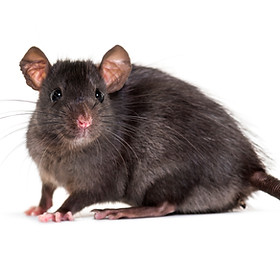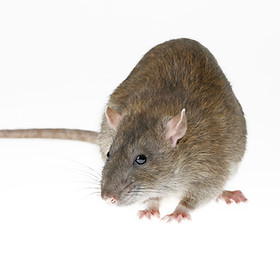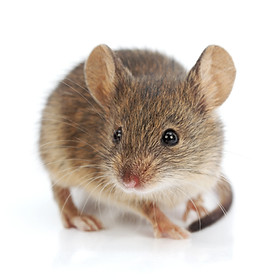


Identify: Of slight build and with large prominent ears, a tail longer than its body length and a pointed snout, the roof rat is an excellent climber and commonly encountered in urban settings. Its superb climbing skills enable it to tightrope walk, travelling between buildings via connected cabling.
Habits: Internally, roof rats are likely to nest in the insulation founds in roof voids and wall cavities, and range throughout a building to feed. Externally, roof rats will nest in trees and vines. Roof rats have a varied diet, generally feeding on cereals, grains, fruit and almost any item that has nutritional value. If necessary, they will feed on insects or meat.
Lifespan: Roof rats usually live between 9-12 months. Females can have 4-5 litters per year, averaging 6-8 pups per litter with a gestation period of only 21 days!
Request a Booking
Identify: The Norway rat is the larger of the two pest rats with a thickset body, small close-set ears, a tail shorter than its body length and a blunt snout.
Habits: The Norway rat is possibly the most economically damaging pest rodent, infesting warehouses, factories, shops, supermarkets, sewers and rubbish dumps amongst many other locations that offer food and shelter. Unlike the roof rat, the Norway rat is a burrower, living in burrows near their food and water supply and in areas that provide safe refuge. Their burrows often have ‘bolt holes’ to facilitate speedy exits. The Norway rat is likely to reside in the roof and wall voids of buildings in the colder winter months, however they are known to live internally all year round. They are also usually most active at night.
Lifespan: As with the roof rat, the Norway rat's lifespan is also usually between 9 and 12 months. Females can have 5-6 litters per year, averaging 8-10 pups per litter. The gestation period is also 21 days with the young reaching sexual maturity at 3-4 months.
Request a Booking






Identify: The house mouse is the smallest of the pest rodents, with large ears, a tail equal to its body length, and a pointed snout.
Habits: The House Mouse is generally found in urban areas, being closely associated with humans, however that is not to suggest they can’t be found in rural areas. In rural areas, mice have been known to multiple to plague proportions during occasions of mild weather, abundant food and shelter, and reduced natural enemies. These mice then migrate causing significant damage and losses both on farms and inside buildings. Mice typically prefer to nest in secluded and confined locations, where it is warm, dry and dark, and in shallow burrow systems outside of buildings.
Lifespan: The house mouse has a life span of approximately 12 months. Females can have 6-10 litters per year. The house mouse reaches sexual maturity at about 6 weeks and has a gestational period of 3 weeks.
Request a Booking




View Our Areas of Services
Abbotsford, Armadale, Auburn, Balwyn, Bayswater, Berwick, Blackburn, Boronia, Box Hill, Brighton, Burwood, Camberwell, Canterbury, Cranbourne, Cremorne, Croydon, Dandenong, Doncaster, Fairfield, Forest Hill, Frankston, Glen Iris, Glen Waverley, Hawthorn, Kew, Kilsyth, Langwarrin, Mitcham, Mooroolbark, Mount Waverley, Mulgrave, Narre Warren, Nunawading, Officer, Pakenham, Ringwood, Rowville, Toorak, Vermont, Wantirna, Windsor
Book A Pest Control Specialist